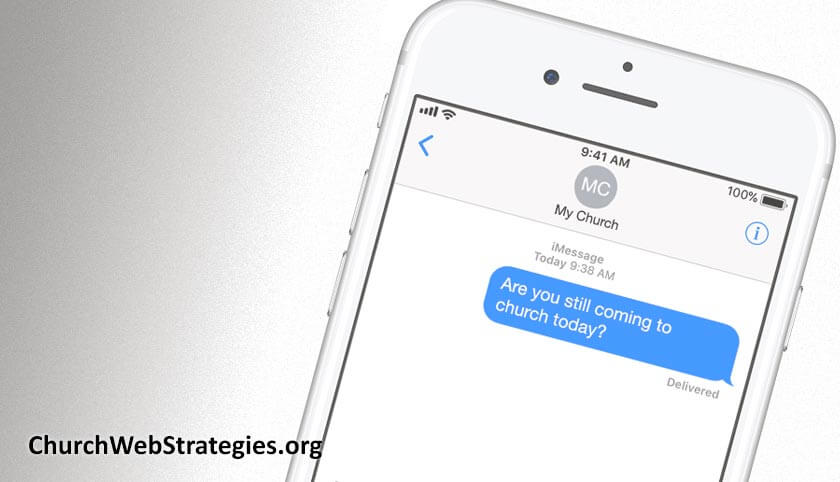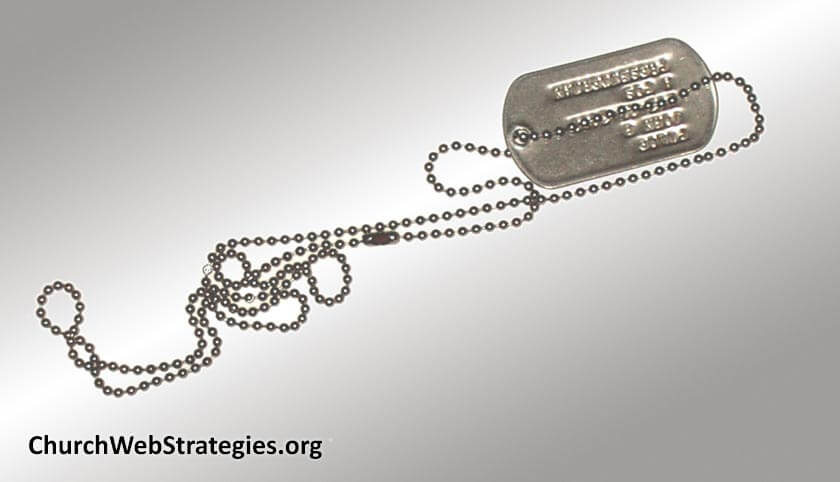Although Twitter is still a buzz word in short message communication, SMS texting is still a pretty big deal. Worldwide, over 6 trillion text messages were sent in 2010, and estimates for 2011 are 8 trillion. Even better news is that nearly all cell phones, including older flip phones, receive text messages. With this amount of proliferation, why not consider using this form of communication to your church’s advantage?
Continue reading “3 Tips for SMS Marketing at Your Church”
Category: UX and Design
A user experience is all aspects of someone’s interaction with your digital ministries. UX tools are things we do to help better understand what users want. Design is how we take action on research. That understanding can be used for every aspect of your ministry. These articles outline those various research methods and applications.
Even If You Are Wrong, Be Consistent
Utilize patterns to create a consistent experience on your church website. Inconsistent designs are more disruptive than a bad design. It forces your users to constantly learn new mechanisms to use the site. Patterns, color palettes, icons and page templates all provide a familiar comfortable experience that keeps your users on your sites and hopefully walking into your church.
Continue reading “Even If You Are Wrong, Be Consistent”
Define Your Victory
If you do not define what victory is, you will never know if you achieved it. Your church website should always evolve via small projects. Each project needs a clear goal and definition of what is considered a “win”. If not, you will not know if you succeeded, and more importantly, when you failed.
Continue reading “Define Your Victory”
Words Matter on your Church’s Website
When words are the primary means of communication, they matter… a lot! Church websites need to be especially careful with how they word things because of the hot topic religion has become. Even among fellow Christians, theological differences can cause splits in groups. I trust that your pastor will proofread the copy for your tenants of faith; however, you as the web team leader need to take great care when crafting the rest of the words on your site.
Don’t Be Afraid To Take Something Away
If you visited the original website, you may remember when I changed the color scheme of my header image / logo . I took away the colors for the sky and ground. Why? I was doing too much and was not providing enough focus. This blog is about growing church websites. So I drew attention to just that, a growing plant. Much like fasting and isolating yourself for prayer helps you focus; taking something away from your church’s web pages can help users focus.
Continue reading “Don’t Be Afraid To Take Something Away”
Multi-site Church Web Tips
If you are a church looking to move to a multi-site approach, your website will need to change. Also, if you are a multi-site church, do not rely on using single-site church websites as the inspiration for your design and architecture. Multi-site churches are different and need to present a mix of unity and diversity to effectively reach their intended audiences. Finding that balance is easier than you think when you consider the marketing approaches taken by companies with multiple product lines.
Continue reading “Multi-site Church Web Tips”
Writing a Content Strategy Document for your Church
Everything on your website must have a purpose. Just like a Sunday sermon, if you go off on an unnecessary tangent, or leave a key piece of information out; you are doing your listeners an injustice and may lose their attention. I imagine most pastors research and prepare an outline for their sermons. The content on your website should be no different and not treated as something we should do at the last minute. A great tool to focus your efforts is a content strategy document.
Continue reading “Writing a Content Strategy Document for your Church”
Where Is Your Church Going?
If your church does not set a clear business objective, you do not know where you are going, nor do you have no means to measure success. Business objectives can be both long and short term; from sending a group on a mission trip, hosting a conference, raising membership, or even recording a worship CD. Brainstorming with groups and committees can get a long list of items, leadership can prioritize, and your website can certainly help!
Determining your ROI Part 2: Measuring Returns
In Part 1 of this series I asked you to take a look at what each person in your church brought to the table. I then asked that you compare that to what you spend on getting new members through the door. The greater the difference, the better your return on investment is. One piece I left out was how to measure that gap. Using an analytics tool, you can easily see how users are behaving on your website, and what sources (i.e. your ads) brought them there.
Continue reading “Determining your ROI Part 2: Measuring Returns”
Do Not Force Identities on Users
To this day I still do not understand why some companies force users to self-identify. When trying to buy a computer on a major name brand website, you must often declare if you are a home, student, and business customer. What if you are a part-time student who lives at home while running a small business? What do you choose? For church websites, do not ask if the users is an existing member, prospective member, or anything else. Present content that engages all of your target audiences and they will make their own choice.
Continue reading “Do Not Force Identities on Users”
Determining Your ROI Part 1: Comparing Costs
In a previous article, I said that creating your own website is an investment in both time and money. Like any investment, you want to know what kind of return you are getting. This is often difficult to do for printed media and commercials. Unless someone explicitly tells you they saw your ad, or walks through the door with a flier in hand, you do not know if your money was well spent. However the web gives us many more insights, since every click can be tracked and every contact archived.
Continue reading “Determining Your ROI Part 1: Comparing Costs”
Not Everyone Can Design
When you ask people in the church who can fix a car, crochet, shingle a roof, or bake a gold medal pound cake… people will most likely not lie about their talents. If they cannot do it, they admit it without shame. However when it comes to the web, everyone has an opinion. That opinion often spills over into them deciding how the site should look. Do not relegate your designers to the task of simply pushing pixels. Let them do their job and they will continue to surprise you!












